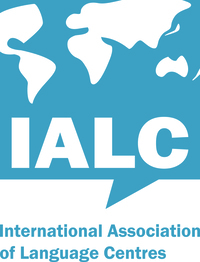Speaking is often regarded as the skill that language learners most desire to improve. Achieving fluency, the ability to communicate effortlessly and effectively in a language, is a key objective for many learners. In this article, we’ll explore what fluency entails, the factors that may hinder students from speaking, and practical strategies for promoting speaking fluency in the language classroom.


Understanding Fluency
Fluency, as defined by Longman dictionary, is the ability to produce continuous speech without causing comprehension difficulties or breakdowns in communication. It involves the capacity to discuss a wide range of topics and to be understood and understand others effectively. A fluency activity, therefore, should encourage students to utilise the language freely, fostering creativity and experimentation while maintaining a structured framework.
Common Challenges in Speaking
Students may hesitate to speak for various reasons, including lack of motivation, unfamiliarity with the topic, uncertainty about the task, or feelings of embarrassment or shyness. Moreover, unclear or uninspiring tasks and insufficient language proficiency can also contribute to students’ reluctance to engage in speaking activities.
Practical Tips for Promoting Speaking Fluency
Before the Lesson:
Choose topics and activities that are relevant and interesting to your students. Thoroughly prepare materials and anticipate potential challenges. Consider providing pre-lesson language input or resources to support students’ speaking proficiency.
During the Lesson:
Set up activities with a clear context and purpose. Pre-teach any necessary language or vocabulary. Provide clear instructions and monitor student participation. Offer corrective feedback only when necessary to maintain communication flow. Take notes on both successful language use and areas for improvement…
Define Clear Objectives: Clearly articulate the aims of the lesson, whether it’s developing negotiation skills, enhancing conversational fluency, or expanding vocabulary. Providing a clear purpose motivates students and guides their language production.
Preparation and Language Input: Consider the language needs of your students and provide necessary language input before the speaking activity. This could involve teaching relevant vocabulary or language structures to support effective communication.
Effective Activity Setup: Create a conducive environment for speaking activities by setting up clear contexts, providing engaging prompts or topics, and delivering concise instructions. Ensure students understand the task requirements and feel confident to participate.
Encourage Authentic Communication: Create opportunities for students to engage in authentic communication by simulating real-life scenarios or discussions on relevant topics. Encourage active participation and interaction among students to foster fluency in spontaneous speech.
Utilise Technology: Incorporate technology tools such as voice recording apps, speech recognition software, or online discussion forums to provide additional speaking practice outside the classroom. These tools offer students the chance to practice speaking independently, receive instant feedback, and track their progress over time.
Provide Peer Feedback: Implement peer feedback sessions where students can listen to and critique each other’s speaking performances. Encourage constructive feedback and offer guidance on areas for improvement, empowering students to take ownership of their learning and support each other’s language development.
After the Lesson:
Reflect on student performance and feedback to evaluate strengths, weaknesses, and interests. Use this information to inform future lesson planning and tailor activities to students’ needs and preferences.
Incorporating these diverse strategies into language instruction fosters a collaborative and dynamic learning environment. By embracing authentic communication, leveraging technology tools, and facilitating peer feedback, educators empower students to actively engage in their language learning journey. Through consistent practice and meaningful interaction, students not only develop fluency in speaking but also cultivate confidence and communicative competence. This holistic approach to speaking instruction equips learners with the necessary skills to navigate real-world language situations and express themselves effectively. As educators continue to implement these innovative techniques, they play a vital role in nurturing students’ language fluency and fostering a lifelong love for learning.





